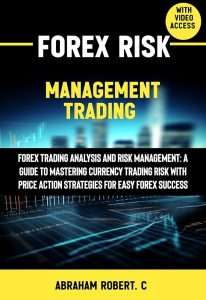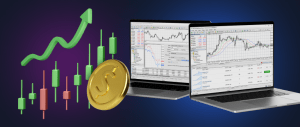A Comprehensive Guide to Forex Day Trading
Unleash your inner trader! Learn the secrets of forex day trading – master market dynamics, technical analysis, and risk management to conquer the currency markets. This guide reveals the path to success.

Day trading forex‚ the practice of buying and selling currency pairs within a single trading day‚ presents both significant opportunities and considerable risks․ It requires a deep understanding of market dynamics‚ technical analysis‚ and rigorous risk management․ Successful day traders possess a keen ability to identify short-term price movements and capitalize on them․ This comprehensive guide will delve into the intricacies of day trading forex‚ equipping you with the knowledge and strategies necessary to navigate this dynamic market․
Understanding the Forex Market
The foreign exchange market‚ or forex‚ is the largest and most liquid financial market globally․ Unlike stock markets with centralized exchanges‚ forex operates 24 hours a day‚ five days a week‚ across multiple global financial centers․ This decentralized nature offers numerous trading opportunities but also necessitates constant vigilance and adaptability․ Understanding the market’s structure‚ participants‚ and driving forces is paramount to success in day trading․
Major Currency Pairs and Their Dynamics
The forex market centers around currency pairs‚ representing the relative value of one currency against another․ Major pairs‚ such as EUR/USD (Euro/US Dollar) and USD/JPY (US Dollar/Japanese Yen)‚ are highly liquid and exhibit relatively low spreads․ Minor pairs and exotic pairs‚ while offering potential for higher returns‚ often involve wider spreads and increased volatility․ Day traders need to carefully consider the specific characteristics of each pair before engaging in a trade․
Analyzing the historical performance of currency pairs is crucial․ Identifying trends‚ support and resistance levels‚ and typical price movements can inform trading decisions․ However‚ relying solely on historical data is risky‚ as market conditions constantly evolve․ Combining historical analysis with real-time market data and technical indicators is a more robust approach․
Fundamental and Technical Analysis in Forex Day Trading
Successful day trading requires a combined approach of fundamental and technical analysis․ Fundamental analysis involves assessing macroeconomic factors such as interest rates‚ economic growth‚ and political events that influence currency values․ Technical analysis‚ on the other hand‚ focuses on chart patterns‚ indicators‚ and price action to predict future price movements․ Day traders often rely more heavily on technical analysis due to the short-term nature of their trades․
- Fundamental Analysis: Considers economic data releases‚ political announcements‚ and central bank decisions․
- Technical Analysis: Employs chart patterns (e․g․‚ head and shoulders‚ triangles)‚ indicators (e․g․‚ RSI‚ MACD)‚ and candlestick patterns to predict price movements․
Developing a Robust Trading Strategy
A well-defined trading strategy is the cornerstone of successful day trading․ This strategy should incorporate risk management principles‚ entry and exit rules‚ and a clear understanding of your trading style․ Without a structured approach‚ day trading can quickly become a chaotic and unprofitable endeavor․
Risk Management: The Foundation of Success
Effective risk management is non-negotiable in day trading․ Losses are inevitable‚ but a well-defined risk management plan can minimize their impact․ This involves determining your maximum acceptable loss per trade‚ using stop-loss orders to limit potential losses‚ and diversifying your trades across multiple currency pairs․ Never risk more capital than you can afford to lose․
Choosing Your Trading Style
Day traders can adopt various styles‚ such as scalping‚ swing trading‚ or day trading with longer holding periods․ Scalping involves taking advantage of tiny price fluctuations‚ requiring rapid execution and a high degree of precision․ Swing trading involves holding positions for several hours or even days‚ aiming to capture larger price swings․ Choosing the right style depends on your personality‚ risk tolerance‚ and available time commitment․
Backtesting and Optimization
Before implementing any trading strategy in live markets‚ thorough backtesting is crucial․ This involves testing your strategy on historical data to evaluate its performance under various market conditions․ This process allows you to refine your strategy‚ identify weaknesses‚ and improve its overall effectiveness․ Regularly optimizing your strategy based on market feedback is essential for long-term success․
Essential Tools and Resources for Day Trading Forex
Day trading forex requires access to reliable tools and resources․ This includes a reputable brokerage account‚ a powerful trading platform‚ and access to real-time market data and analysis․
Choosing a Forex Broker
Selecting a trustworthy and reliable forex broker is paramount․ Consider factors such as regulation‚ trading fees‚ platform functionality‚ and customer support when making your choice․ Reputable brokers provide secure trading environments and adhere to strict regulatory standards․ Research and compare different brokers before making a decision․
Trading Platforms and Charting Software
A robust trading platform is indispensable for day trading․ Look for platforms that offer advanced charting capabilities‚ technical indicators‚ automated trading tools‚ and real-time market data․ Many platforms offer customizable interfaces and allow you to create personalized trading setups․ Choosing the right platform enhances efficiency and effectiveness․
Utilizing Economic Calendars and News Sources
Staying informed about upcoming economic events and news releases is vital․ Economic calendars provide schedules for important data releases‚ allowing you to anticipate potential market volatility․ Reliable news sources offer real-time updates on market-moving events‚ enabling you to react swiftly to changing conditions․ Ignoring major news events can lead to significant losses․
Advanced Strategies and Techniques
As you gain experience‚ you can explore more advanced strategies and techniques․ These may include using sophisticated technical indicators‚ implementing algorithmic trading‚ or incorporating sentiment analysis into your decision-making process․
Algorithmic Trading and Automation
Algorithmic trading‚ or automated trading‚ involves using computer programs to execute trades based on pre-defined rules․ This allows for faster execution‚ reduced emotional biases‚ and the ability to analyze vast amounts of data․ However‚ it also requires programming expertise and careful risk management to prevent unintended consequences․
Sentiment Analysis and Market Psychology
Understanding market sentiment can provide valuable insights into potential price movements․ Sentiment analysis involves analyzing news articles‚ social media posts‚ and other sources to gauge overall market sentiment towards specific currency pairs․ Combining this with technical and fundamental analysis can improve your forecasting accuracy․
Hedging and Position Sizing
Hedging involves taking offsetting positions to reduce risk․ For example‚ a long position in one currency pair could be hedged with a short position in a related pair․ Position sizing‚ determining the appropriate amount of capital to allocate to each trade‚ is crucial for managing risk and maximizing potential returns․ Proper position sizing prevents catastrophic losses․
Overcoming Challenges and Maintaining Discipline
Day trading forex is challenging‚ requiring discipline‚ resilience‚ and continuous learning․ Overcoming emotional biases‚ managing stress‚ and adapting to changing market conditions are crucial for long-term success․
Emotional Discipline and Avoiding Overtrading
Emotional biases can significantly impact trading decisions․ Fear and greed can lead to impulsive trades‚ resulting in losses․ Maintaining emotional discipline‚ setting realistic goals‚ and avoiding overtrading are essential for consistent profitability․ Overtrading often leads to burnout and financial losses․
Continuous Learning and Adaptation
The forex market is constantly evolving‚ requiring continuous learning and adaptation․ Staying updated on market trends‚ new trading techniques‚ and economic developments is crucial for staying ahead of the curve․ Regularly reviewing your trading strategy and making necessary adjustments is essential for long-term success․
Seeking Mentorship and Support
Seeking mentorship from experienced traders can provide valuable guidance and support․ Learning from others’ successes and mistakes can accelerate your learning curve and improve your trading performance․ Joining online communities or attending trading workshops can also offer valuable insights and networking opportunities․







